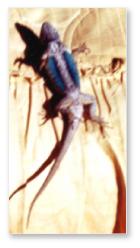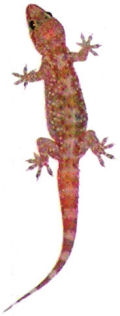Why Bluebellies Have Blue Bellies
Out of all the reptiles I’ve caught and studied as a budding young Herpetologist, these wonderful little blue-bellied lizards were the hardiest and ultimately the most fascinating. Found nearly everywhere in California (with variations across most of North America) these rough-scaled, fast, nimble lizards get their name from brilliant patterns of blue on their relatively soft, smooth stomachs. I’d been catching them for years before I finally realized what the blue on their bellies was for. It was obvious in retrospect, but at the time it was a big revelation.
After being uprooted twice, once from my desert home of Tucson, and then from the crowded, foggy cityscape of the bay area, my family finally settled in Stockton which is right in the middle of California’s central valley. I was about nine or so, and the first thing I did in this new place was to search out the local critters. The bluebelly was the first reptile I discovered, and the first Californian lizard I caught and kept. So you could say that these lizards were my first boyhood friends after the move.
The official name for the bluebelly is the Western Fence Swift (Sceloporus occidentalis). I checked out piles of books from the library, reading all I could about them. Then I begged and pleaded for a terrarium so that I had something decent to keep them in.
 Females are generally more brown and colorless, and have a wider lower stomach. They have little, if any, blue on their bellies. The more feminine the female, the less blue. Conversely, the more macho the male, the more blue and black are on their bellies. Some are so heavily colored that they’re actually gaudy. This should have clued me in on the real use of these decorations, but it never even occurred to me.
Females are generally more brown and colorless, and have a wider lower stomach. They have little, if any, blue on their bellies. The more feminine the female, the less blue. Conversely, the more macho the male, the more blue and black are on their bellies. Some are so heavily colored that they’re actually gaudy. This should have clued me in on the real use of these decorations, but it never even occurred to me.
Keeping one or two at a time was okay, but I had to develop a lot of patience to actually see them do anything. I had my terrarium set beside my bed, and I would spend literally hours just lying there and watching. Then I would dump in some food, usually flies and crickets but occasionally some mealworms, and they would chow down and then settle again. Most people would consider them boring to watch, because when they know you’re there they don’t move a lot. They remain clinging to logs or sticks pretending they’re invisible. Which in some cases they are, because their camouflage can be close to perfect when sitting on a log.
What I discovered later on, though, is you get a lot more entertainment value when you have four or five really macho males in the terrarium, and one or two full-grown females. Have them under a comfortable heat lamp (not too hot!) and give them plenty of food and water. Give them a bit of time to get used to their surroundings.
Then settle down and watch the fun.
I had never seen bluebellies go into full battle mode before. Normally they just nod their heads at each other, but when two or more challengers face off it becomes an all-out contest of intimidation. What they do is hilarious. They flatten themselves out vertically, so that their back is arched and their belly is pushed way down, which makes them appear physically larger. When their bellies are extended vertically like this, the blue can plainly be seen. That’s what it’s for. It’s to say two things:
To females: “Hey babe, wanna party?”
To other males: “Don’t you even think of messing with me!”
They leap, skitter sideways, push and shove, and occasionally snap at their opponent’s tail. It happens all over the terrarium, very fast, and sand and gravel goes flying. The other lizards are caught between being interested and getting out of the way. I had one stubborn old male who had no intention of getting involved, and remained where he was, eyes closed in annoyance, even as the other two repeatedly ran him over.
The mating dance is very similar, but it includes a lot more rapid head nodding while the female (generally) wants to be somewhere else.
Since these were wild animals, I never kept them for very long. I would routinely let them go where I’d caught them, and more often than not I’d end up catching them again later. I’d check them for ticks, apply medicine when needed, keep them for a while and then let them go again. Some I would let go in the wood pile in the back yard, and be tickled to later see tiny little babies running around. These would grow up and start another generation in the wood pile. I kept this up for years.
I never really grew out of Herpetology, and I’m amazed about how popular it’s gotten (and how much more sophisticated the amateur Herpetologists have become). I’m not actively hunting anymore, because I had a bad experience: About ten years ago I was in Houston and was amazed to find Mediterranean geckos running around the walls of the hotel at night. I was trying to coax one out of a crack with a stick when a man came barging out and accused me of trying to break into his daughter’s room. When I explained to him what I was doing I felt incredibly stupid. So now if I don’t have one of my kids with me, I’m not hunting lizards.
Supposedly there’s bluebellies out here in Texas but I haven’t seen one yet. Lots of Anoles, which are interesting lizards too, but no bluebellies. And you know, I really miss them.
From Tales of the Lizard Hunter
By Jerry J. Davis
